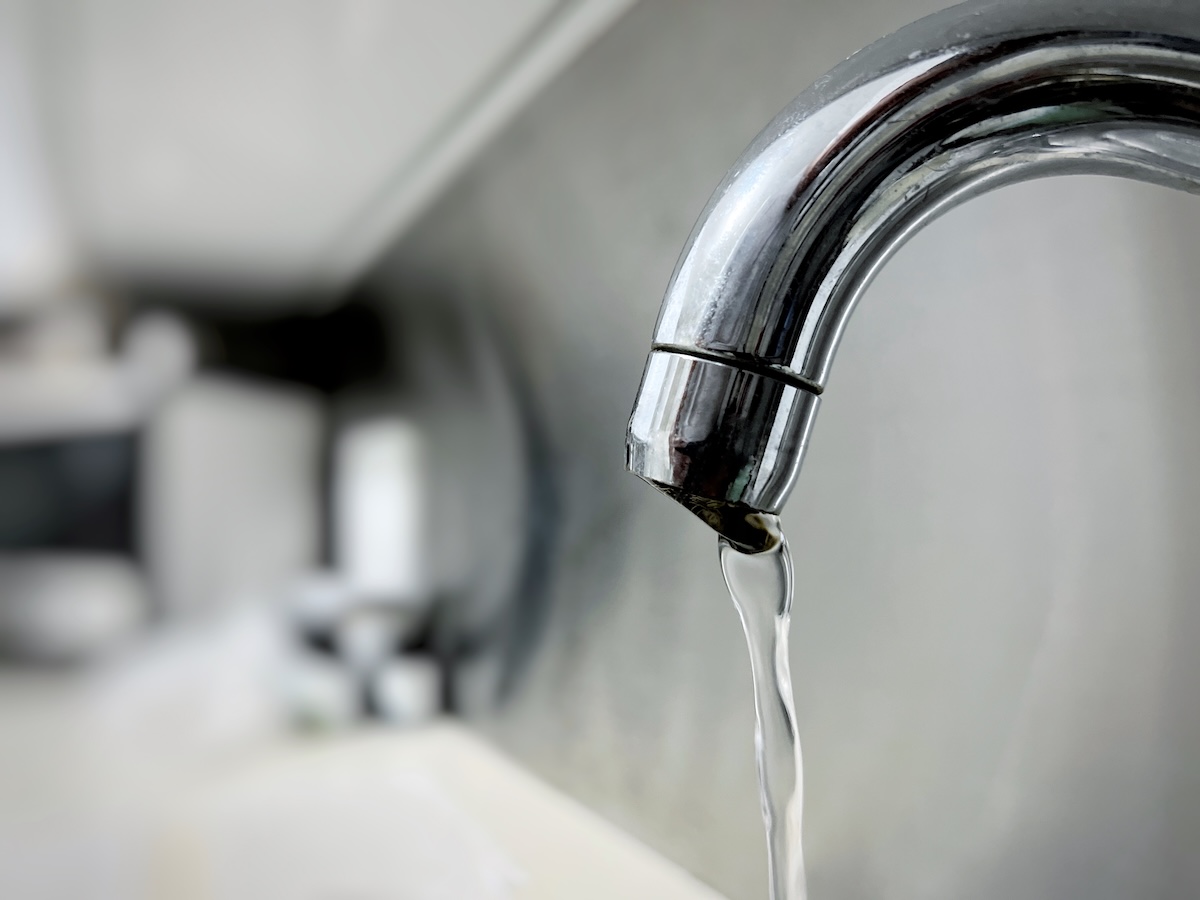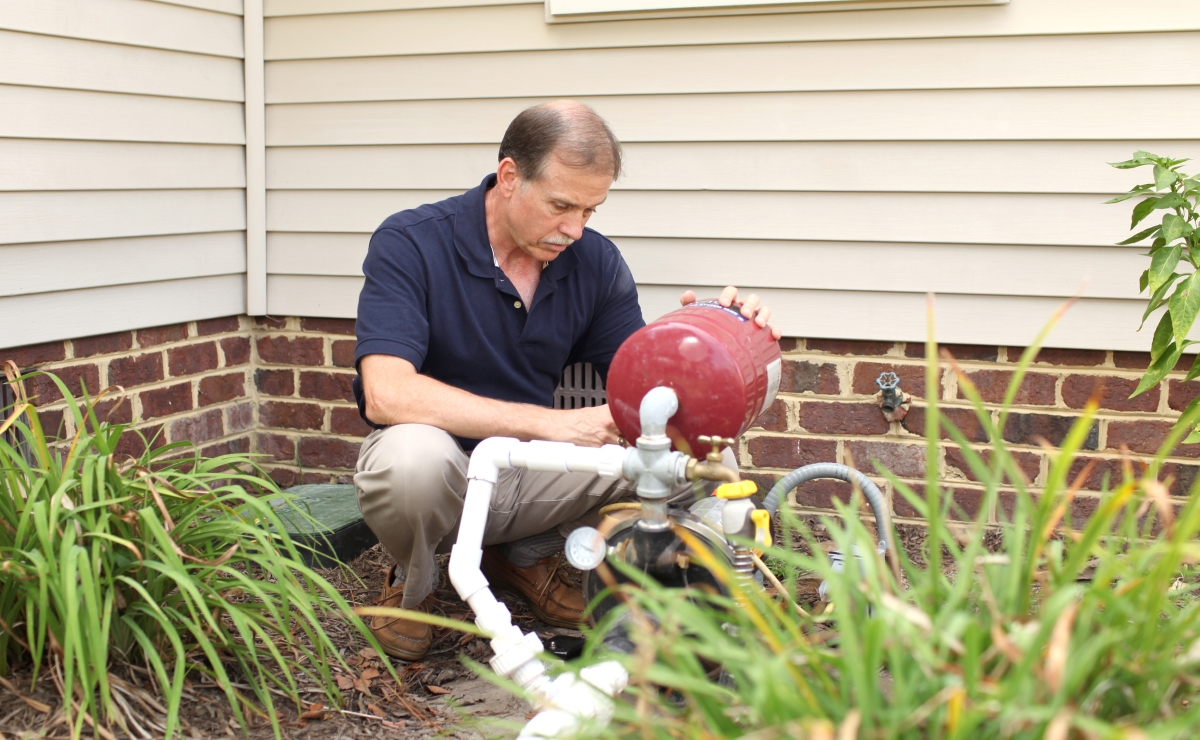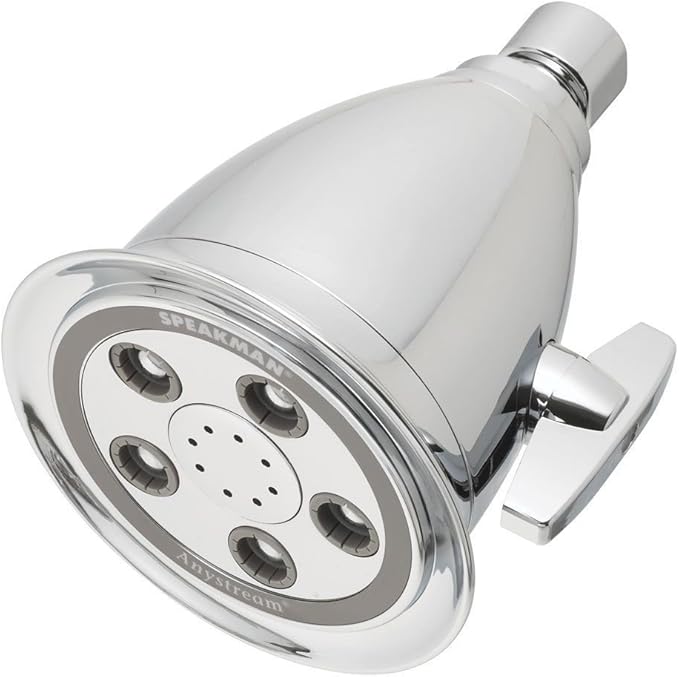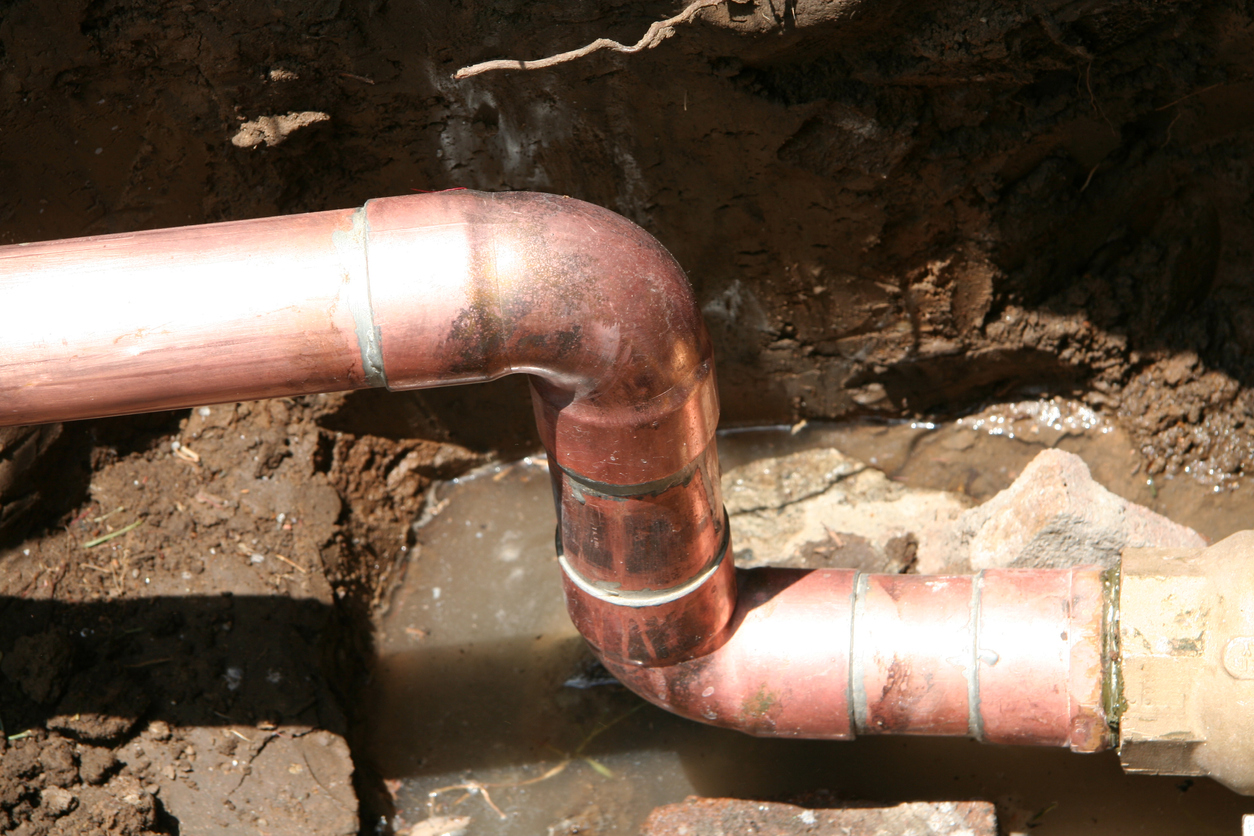

We may earn revenue from the products available on this page and participate in affiliate programs. Learn More ›
Starting or ending a long day with a weak shower is deeply unsatisfying. Still, when other around-the-house fixes rank as higher priorities, sometimes you just learn to live with poor water pressure. Even though you may be willing to tolerate a trickle, the rest of your household shouldn’t have to.
Low water pressure isn’t something you have to live with. These tips, which range from quick fixes to extensive projects, can help you get water flowing again in your home.
1. Talk to your neighbors.
Ask your neighbors if they are having issues with their water pressure, too. If so, the problem may be with the city’s municipal water system. Just like your home’s piping, these systems are subject to leaks, clogs, buildup, and corrosion.
2. Check your well pump.

Some homes receive water from a city’s municipal water supply, while others have wells drilled deep into the ground. The cause of your water pressure problems could be either the well or the well pump supplying water to the home.
For instance, centrifugal-style well pumps don’t operate particularly well with deep wells. Likewise, a submersible pump that’s gone unserviced might be starting to deteriorate. Jet pumps, while good for most well depths, also need maintenance from time to time.
If the well can’t keep up with the home’s water needs, you might need to drill a new one to keep up with the demand. Looking for a new pump? Our researched guide to the best shallow well pumps offers some terrific options.
3. Test the pressure yourself.
Before calling your local water department, you can test the city water pressure yourself by using a water pressure test gauge with a hose connection. Simply screw the device onto a hose faucet and turn on the tap, having first made sure that the rest of your home’s faucets and any water-using appliances (for example, the dishwasher and washing machine) are turned off.
According to experts, 45 or 50 pounds per square inch (PSI) is on the low side, 60 is a good reading, and 80 or above is too high. After you have either ruled out or confirmed a citywide pressure problem, you can decide which steps to take next.

WE RECOMMEND
Speakman Anystream Hotel S-2005-HB Showerhead
When your home’s water pressure is low, you tend to notice (OK, lament) the problem most while you’re in the shower. This showerhead from Speakman, which is the best overall pick in our tested guide to the best showerheads for low water pressure, is a game-changer. Despite its budget-friendly price, it doesn’t look or feel cheap, and it outperformed competitors that cost more than 10 times as much. The massage spray is incredibly powerful—by far the strongest spray we tested—and it’s perfect for rinsing out shampoo thoroughly and working out muscle tension after a long day. If you’re someone who craves a high-pressure spray, this one delivers in spades.
4. Clear the clogs.
Over time, your pipes can develop a buildup of mineral deposits, and the situation can be particularly bad if you have hard water. In extreme cases, the diameter of the pipes decreases until they clog, preventing the water from freely flowing through, and killing the house water pressure. This leaves you with a pitiful drip in the shower or a paltry trickle from the faucet.
While extreme cases require that you replace sections of pipe, you can handle some clogs on your own. In fact, you can tackle the blockages at your system’s exit points by dissolving any minerals that are gumming up the works inside your faucet fixtures and shower heads.
Simply place an open zip-top bag filled with vinegar over your shower head or faucet, tie it in place with some string, and leave it overnight to soak. Rinse off your cleaned fittings the next morning, and put your bathroom back together. If this trick doesn’t increase water pressure and you believe there is a more severe mineral clog inside the pipes, call in a plumber to assess and correct the problem.
5. Open your main water valve.

This solution requires little more than a few minutes of investigative work. Your house has a main water valve, usually located near the meter. This valve controls the flow of water into your home’s pipes. Find the valve and make sure it’s completely open. Opening a half-shut valve is one of the quickest ways to increase home water pressure.
Sometimes the main valve is turned off accidentally during routine repairs and maintenance without your knowing about it. If, for example, your drop in water pressure coincides with recent work you’ve had done on the home, the contractor may have turned off the main water supply to your home and only partially reopened the valve when the job was done. The result: restricted water flow and reduced pressure. Fortunately, the valve is easy to open yourself—you don’t have to call a plumber for this.
6. Replace the regulator.
Many homes that rely on public water have a regulator, which is located either at the meter or where the service line enters the home. The regulator ensures that water doesn’t rush through the pipes and cause water hammer. When the regulator goes bad, the pressure gradually drops, causing a loss in velocity that affects some or all of the fixtures in your home.
To solve the problem, reset or replace this part. Better yet, hire a plumber to do the work for you. If you don’t already have a plumber in your list of contacts, try using Angi, an online platform (and BobVila.com partner) that makes it easy to find qualified, vetted local pros.
7. Look out for leaks.

Cracked or damaged pipes may result in water leaks that siphon off water as it travels through your pipes, leaving you with just a trickle at the tap. To determine whether your main pipe is damaged, make sure all indoor and outdoor faucets are shut off, then turn off the main water valve in your home and write down the number that appears on your water meter. Return in 2 hours and take the meter reading again. An increased reading is a sign of a leak, and a sign that it may be time to call in a professional.
Galvanized steel pipes are particularly vulnerable to corrosion over time, so if you decide to upgrade your pipes, it’s a good idea to choose superior plastic or copper pipes. You should feel no pressure to DIY this particular fix: Replacing pipes requires the skills of a professional plumber.
While it’s a costly project, pipe replacement will do more than improve your showering experience and increase water pressure. In addition to boosting water pressure and minimizing the chance of future leaks, swapping out old plumbing for new can reduce the risk that corrosives will contaminate your drinking water, resulting in better-quality H2O.
8. Install a home water pressure booster.
If you’ve tried some of these fixes and you’re still scratching your head over your home’s low water pressure problems, it may turn out that the problem has less to do with your home and more to do with the neighborhood. Gravity and distance are two factors that negatively impact water pressure. If your household water supply is forced to travel uphill or over a great distance from the municipal water source, its pressure may be impacted. To increase the flow rate of the water when it reaches your home, consider installing a water pressure booster pump.
Most water pressure booster pumps run $200 to $400, though some are considerably more expensive. Of course, that price doesn’t include the cost of installation (which is best left to a master plumber) and the potential increase in your monthly electric bill.
Final Thoughts
Those are some of the best ways to troubleshoot low water pressure in a home. With a bit of research, a little investigation, some know-how, and (possibly) some professional help, you should be able to improve house water pressure in almost any scenario.
Whether it’s installing a home water pressure booster or simply opening a half-shut valve, the tips in this guide can help increase water pressure in your home.
FAQs
There could be a gravity issue, which means that a booster pump is most likely necessary. Also, check to make sure that any control valves are completely open, as a half-shut control valve can reduce flow, which ultimately kills water pressure.
If water is low in the shower alone, try cleaning the shower head with a vinegar solution as outlined above. Otherwise, consider replacing the head altogether and choosing a shower head with a replaceable filter.
When only hot water pressure is suffering, there are a few things worth checking:
• Pipes running to and from the water heater might be corroded
• The valves supplying the water heater aren’t fully open
• There could be sediment buildup in the bottom of the water heater
It could also be that you have problems with the expansion tank, but those issues typically increase water pressure.
